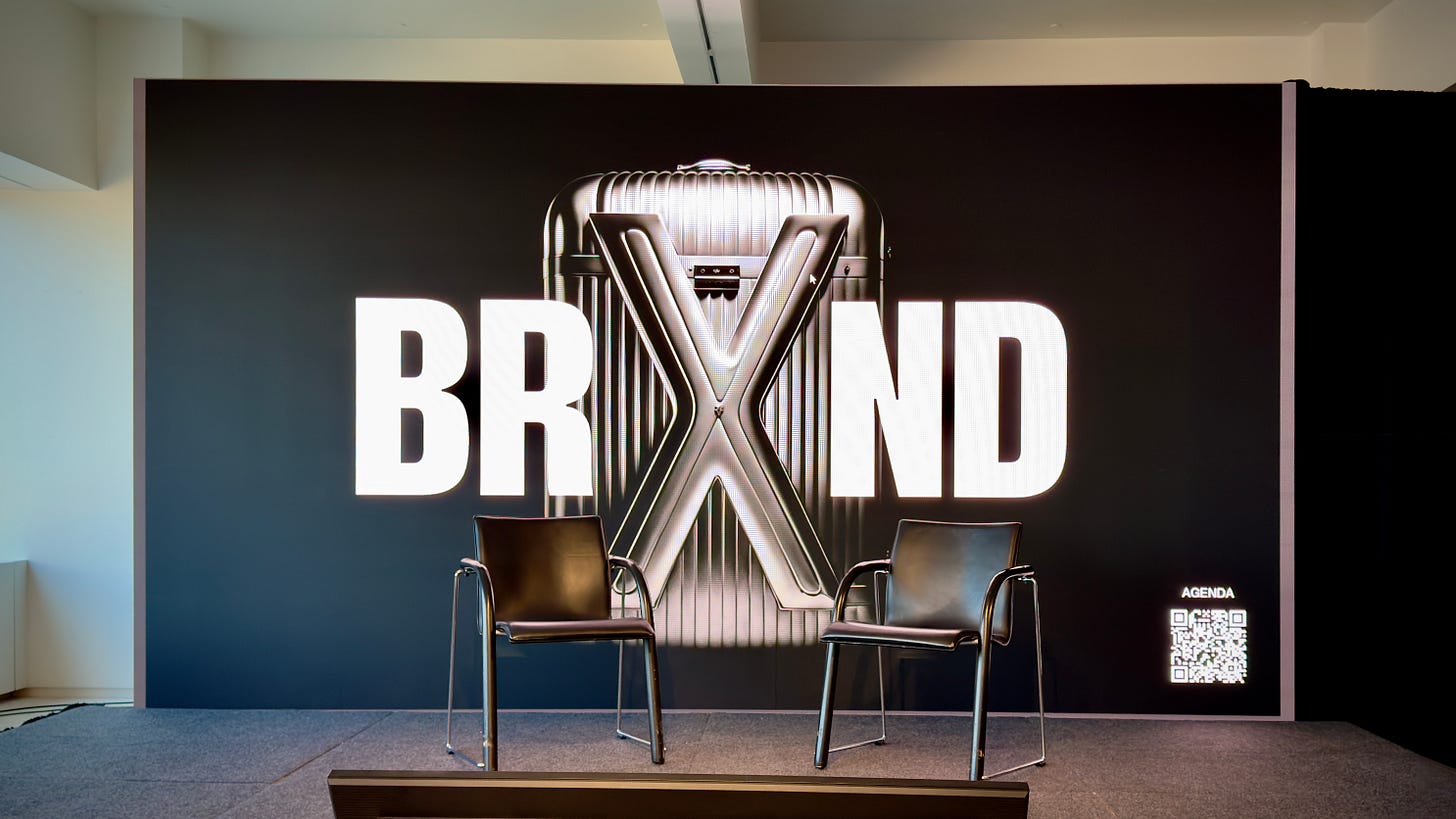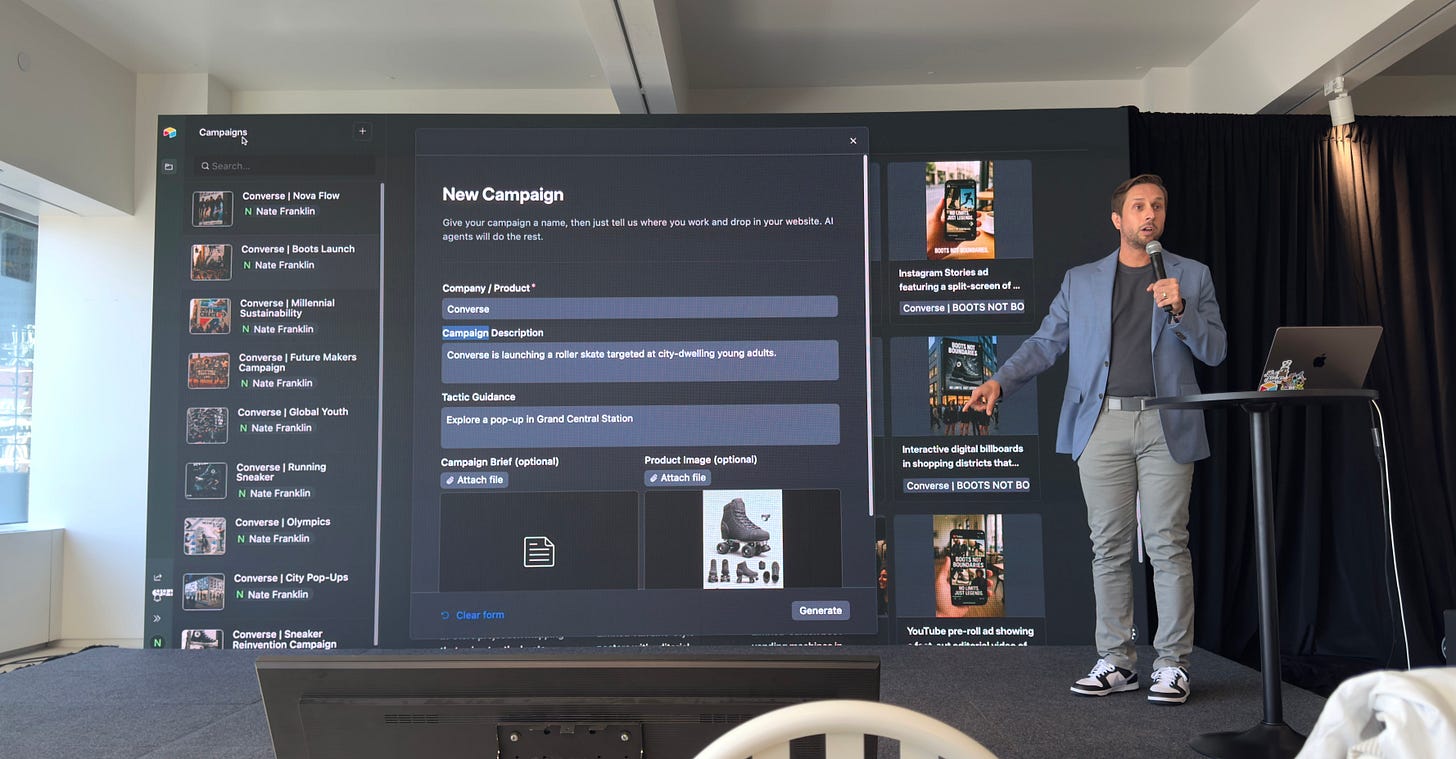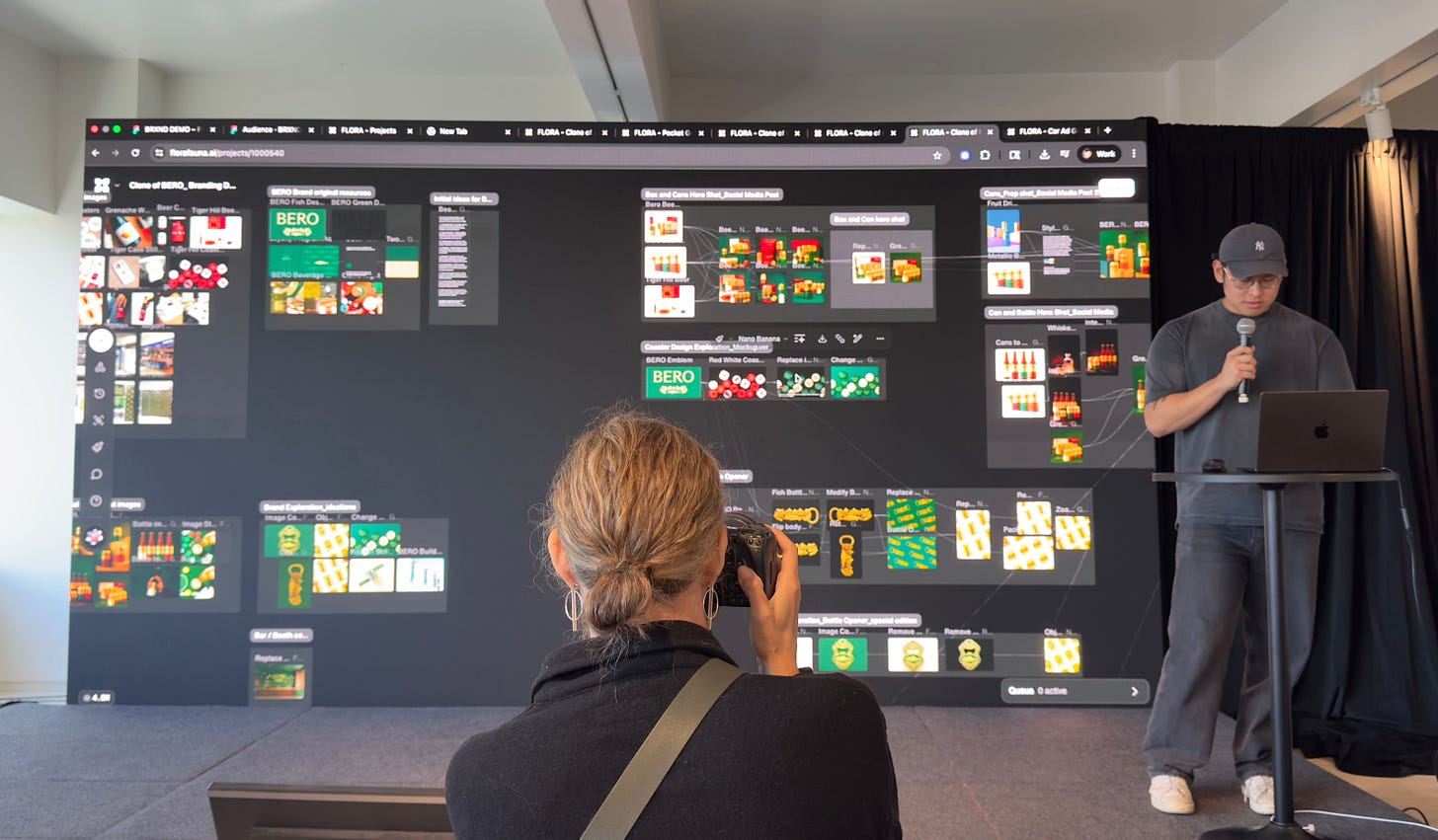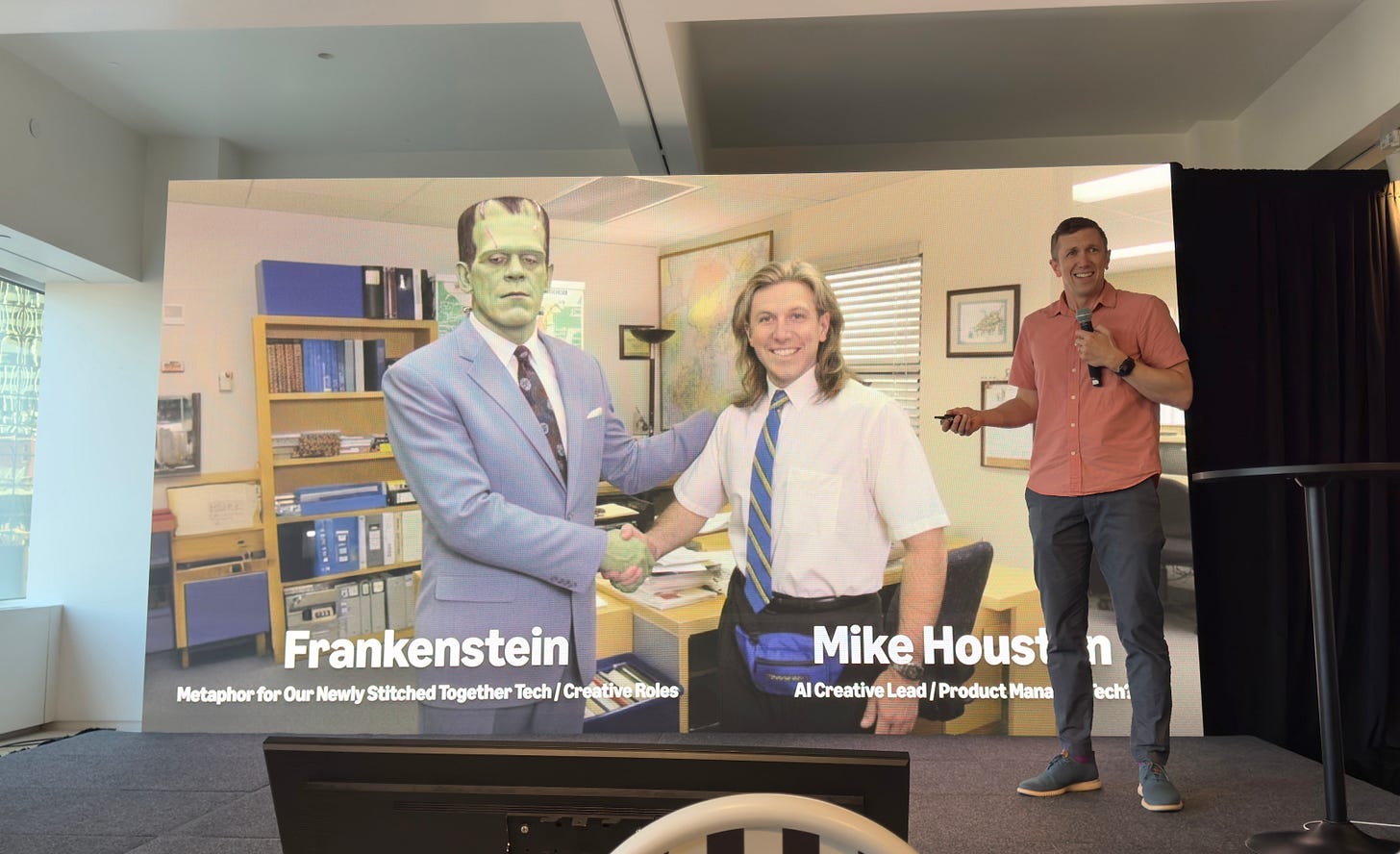It's a Good Time to Be a Weirdo // BRXND Dispatch vol 92
Tim Brunelle recaps BRXND NYC 2025 in three insights: It's still early. AI turns anything into software. And right now is the perfect time to be a weirdo.
You’re getting this email as a subscriber to the BRXND Dispatch, a newsletter at the intersection of marketing and AI.
Author’s note: This week we’re sharing a piece originally published by Tim Brunelle of Curiosity+Courage following the BRXND NYC 2025 conference. Thank you, Tim, for the write-up and for allowing us to repost! Stay tuned for videos from the conference, which will be released very soon.
About Tim: Tim Brunelle is a creative enterprise leader, writer, strategist, teacher, and podcaster who’s been at the forefront of marketing innovation and storytelling since 1992. He hosts the Curiosity+Courage podcast, where he explores the intersection of creativity, AI, and marketing with fascinating industry leaders.
One way to measure the value of a conference is its catering. On that point, I’d give BRXND AI+Marketing a solid A+. The beef stew was surprisingly good, as were the chocolate chip cookies. And then I got stuck in the Holland Tunnel on the way home and missed a flight.
But it was worth it.
Noah Brier puts on a good show. 21 presentations and demos (full event agenda here) covered a lot of territory. It might have been the east coast vibe. It might have been my conversation with Keith, who I hadn’t seen since we worked on flash websites 20 years ago. But I felt a lot of similarity in this conference with the conversations and attitudes we were expressing back in the days of Web 1.0 and 2.0. Software is changing the world, again. Just differently this time.
Insight #1: It’s (still) early
Despite trillions of capex investment, billions of users, and AI salaries in the hundreds of millions — all inside a few brief years — it’s still early days for AI. At least, according to Noah and this slate of speakers. And the reasoning isn’t the software, it’s the humans.
Simply put, there’s plenty of room and time for all of us to be a lot more imaginative.
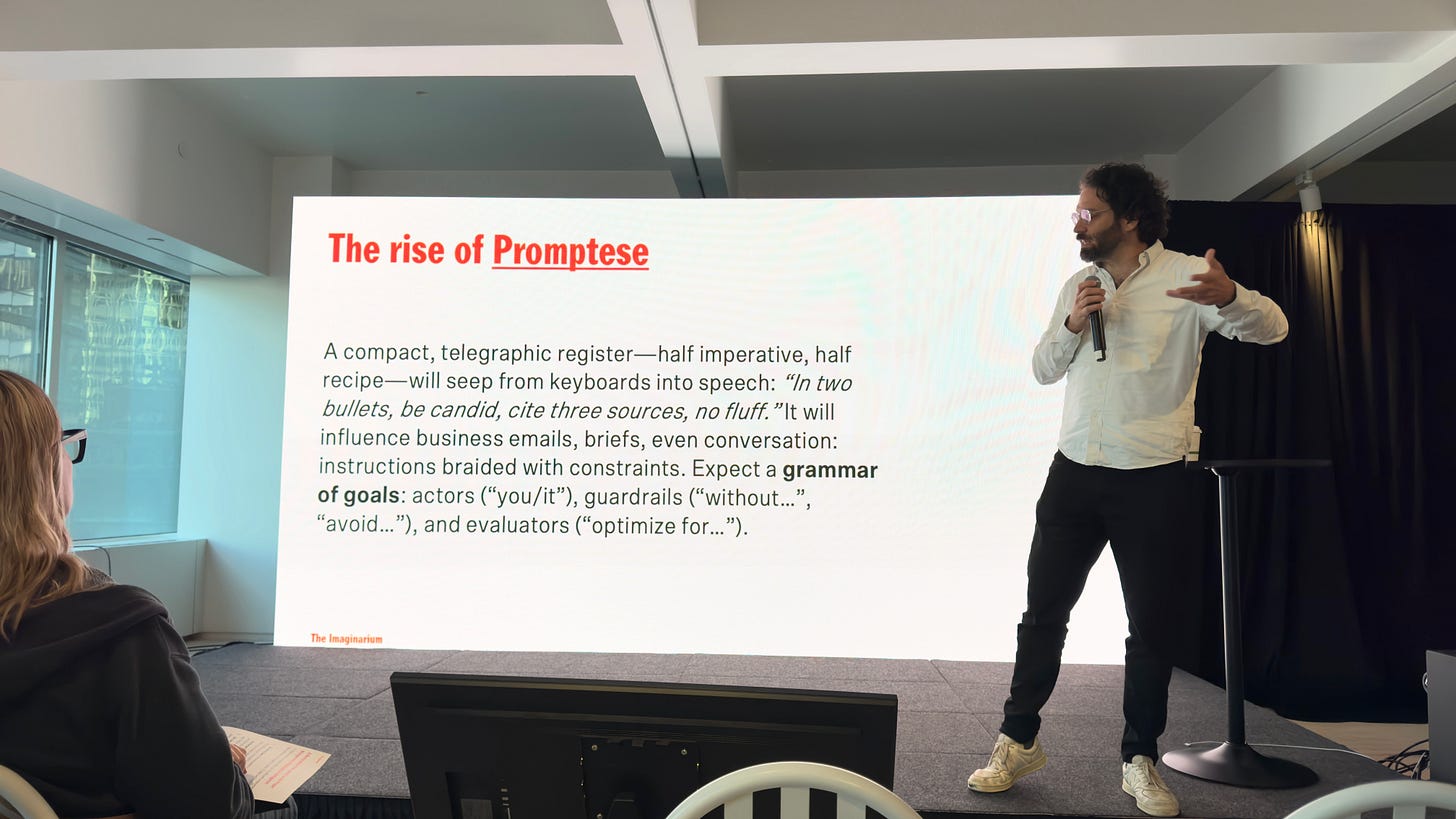
The first keynote came via writer Paul Ford (his Aboard site). If you recall, Paul is one of only two people ever given full authorship of an entire issue of Bloomberg magazine. All 30,000 words or so. He wrote What Is Code? and if you haven’t read it, you should — it remains very relevant. Primarily because code is very much an outcome of human behavior, process, and tribal thinking. AI, no less so.
Therefore, as Ford proposed, “expect nonsense.”
Our relationship with AI, how we presume it will function, is critical to reducing frustrations and getting greater value from this newer form of software. If we remember what AI is — a probabilistic system that’s guessing what’s next — we can be better attuned and better prepared to leverage it.
Yes, it might help us be more productive, i.e. “can you summarize this lengthy thing?” But more importantly, how might AI transform the ways in which we think about work itself?
Paul offered a useful suggestion: Keep a log of how you’re using AI. A simple text doc. Paste in your tasks (i.e. “Prompted X to get Y”). Then, once a quarter, you can paste the log back into an AI to have a conversation about your progress and what you’ve learned — the better to see how you and AI are evolving your relationship.
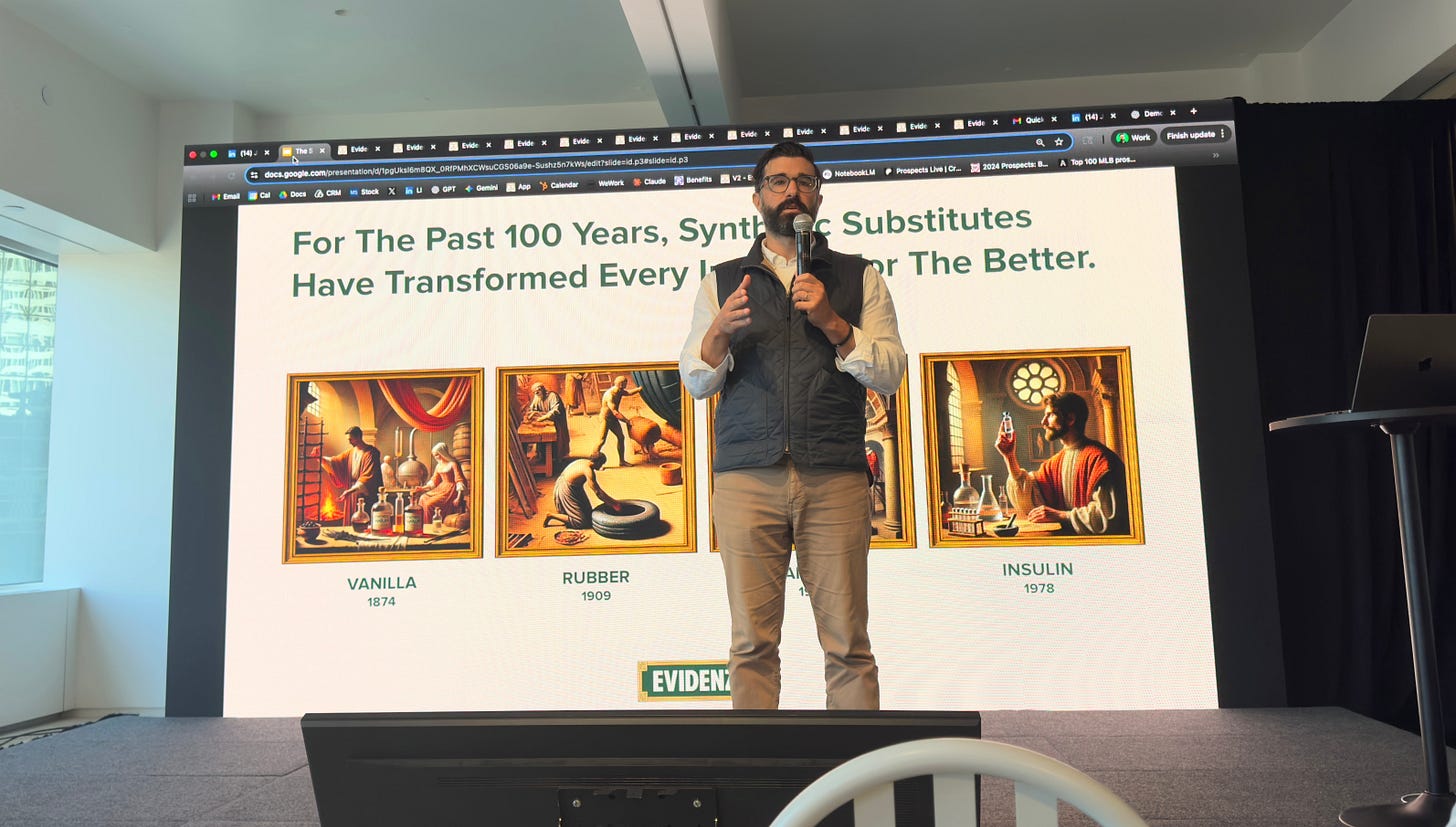
Insight #2: It’s not about adding AI to software, it’s about AI turning anything into software
Across the conference I saw numerous examples of a premise that’s become so common it can be easy to forget: Because of AI (meaning LLMs + natural language processing + multi-modal architecture) we can transform things that were previously not software into software. Or types of software with prior restrictions into different software experiences (i.e. “now I can have a conversation with a spreadsheet”).
Jon Lombardo talked about how Evidenza is transforming B2B insights (previously a thing which were almost impossible to procure) via synthetic persona development
Rex Sorgatz demonstrated a way of re-framing voice-first storytelling through his startup AndThen
And we saw how Airtable, Flora, Suasiv, and Springboards are transforming the agency/marketer process of Business Issue → Audience Insight → Creative Idea → Evaluation/Optimization → Production Pipeline into automated systems
And perhaps as an obvious reaction, there’s CopySight — using AI to both detect and protect brand IP in AI contexts
If you’re running an agency or marketing function those three demos should inspire a few hours of research. Because that’s the direction the business of commercial creativity is heading in. Yes, humans will play a role — just very different roles than the previous 70 years have articulated. And we saw robust examples of this via Mike Houston’s creative team at Amazon and Matt Trainor’s at Lands’ End.
AI is transforming the mishmash steps of how we use to think about, untangle, vet, organize, present, refine and produce ideas into mechanicalized (but no less creative) narratives.
Creativity still matters, perhaps even more so. Just through very different tooling and behaviors. Remember when “interactive” media arrived, transforming the previous era of one way communication? This is that effect, just on every facet of the business, and many we have yet to realize.
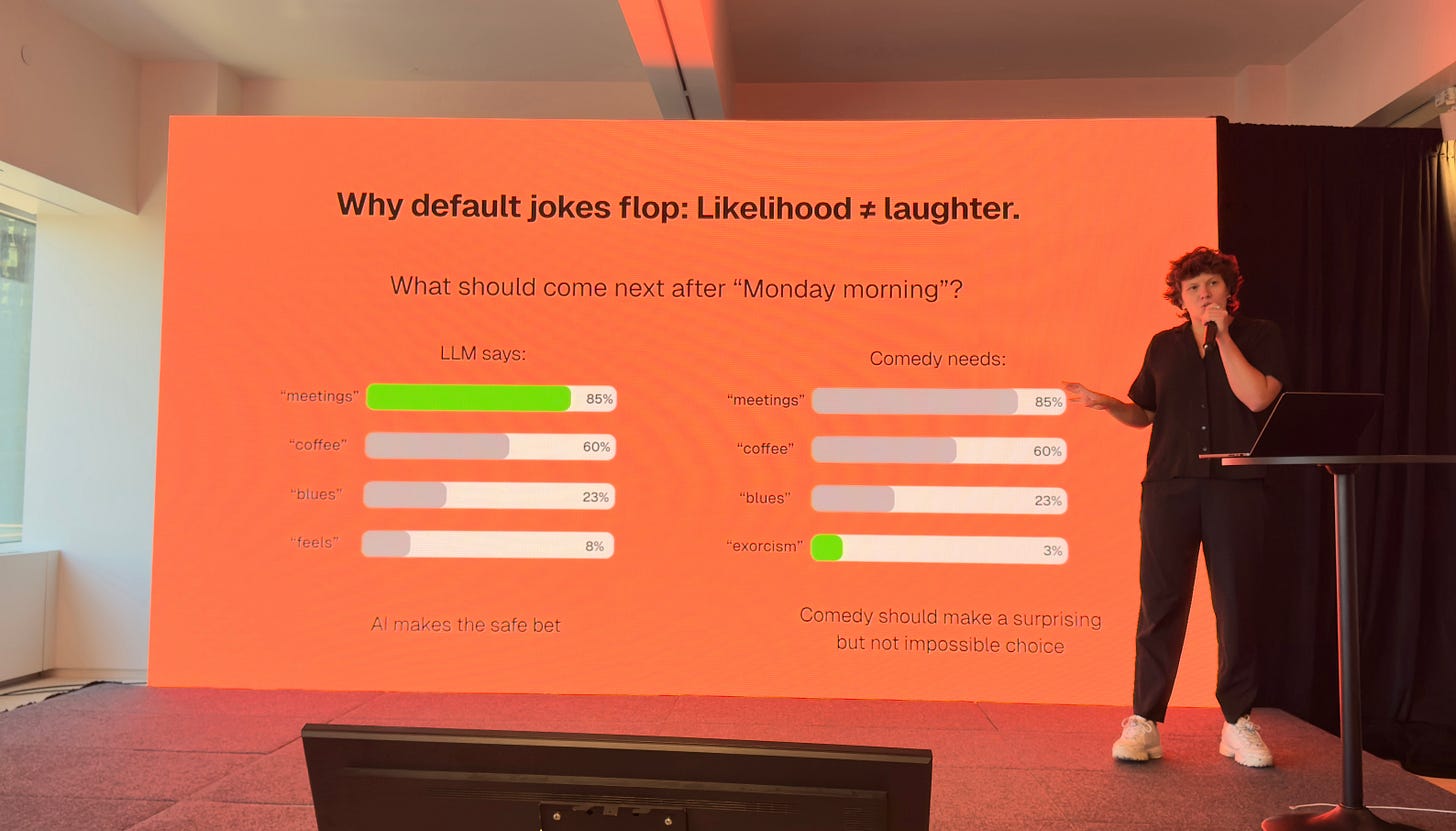
Noah summed it up best:
Insight #3: It’s a really good time to be a weirdo
The AI cement hasn’t even begun to harden. Which means we can mutate industries and conjure new outcomes. If you’re into that sort of thing. Many people aren’t.
It’s easy to be lulled into the mainstream and business leader narrative of AI as only a productivity enhancer and headcount reducer. But those mindsets are rooted in a previous mindset, one that worships the status quo.
Right now is the perfect environment for people disposed towards 1+1=3, the hardware store metaphor, and a keen interest in inventing new norms. My experiences at BRXND suggest there’s asymmetrical advantage lurking outside the commonplace; we should pursue AI not for how it helps us fit in, but for the ways in which it enables us to stand apart.
As a reminder, we started an Anonymous AI Question submission for all the questions you’re too afraid to ask. Submit yours now! If you have any other questions, please be in touch. As always, thanks for reading.
Noah and Claire




